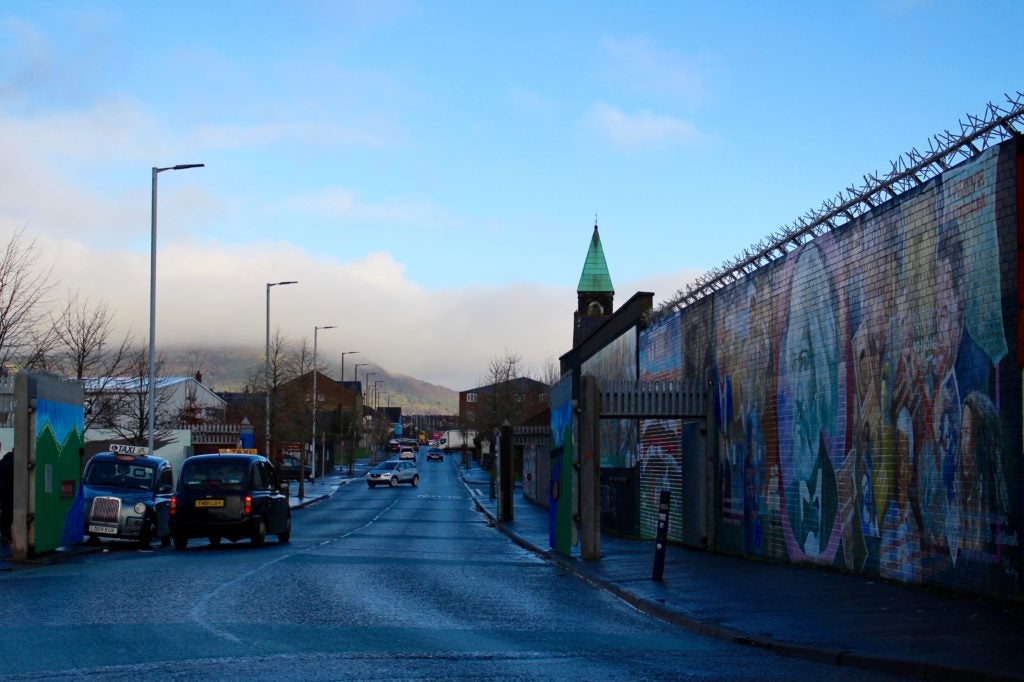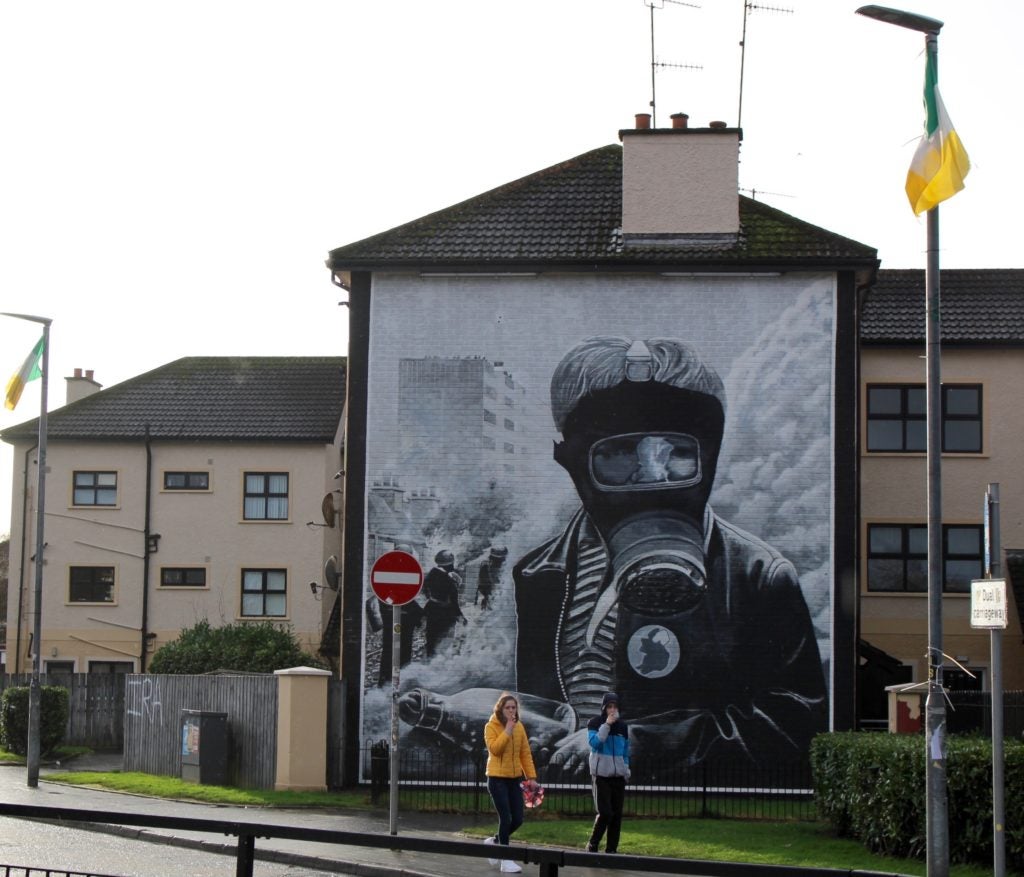Belfast and Derry: Cities of Remembrance
Megan Rooney (COL ’20), while completing a degree in American Studies, traveled to Belfast and Derry courtesy of a Global Irish Studies Fellowship. She wrote her senior thesis about the uses in Northern Ireland of the iconography and tactics of the US Civil Rights movement.
My recent visit to Northern Ireland’s most populous cities, Belfast and Derry, courtesy of Georgetown’s Global Irish Studies Program, was designed to further my research on the relationship between the U.S. and Northern Ireland’s consecutive civil rights movements in the 1960s through the present. This trip brought life to the semester’s worth of books, articles, and newspapers I had been reading on the subject, and I was surprised to discover just how relevant these issues are to this day. These two cities, particularly the working-class, segregated neighborhoods, felt like living, breathing museums, purposefully remaining untouched since the 1998 Good Friday Agreement which led to the tenuous cessation of The Troubles.

As part of my research focuses on the murals which cover areas of both Belfast and Derry, I opted to take guided tours to understand these prominent neighborhood features from a local’s perspective. My Belfast tour guide, Rocky, was a former member of the IRA and had been a political prisoner during the conflict. He took me on a walking tour of the Catholic neighborhoods, showing me the roads in which various riots and battles took place, the homes that were burned out, and the mural-covered walls and gates built to separate and maintain peace between the Catholic and Protestant neighborhoods. Nearly every building or wall had some marker of the conflict, whether in the form of a plaque remembering the individuals who died there, or bullet holes intentionally left for the community to remember and visitors to see. Rocky explained that he does these tours in order to set the record straight, mentioning past attempts of the British government censoring the way this history is discussed. These walls, in part, function to commemorate the past, preserving and expressing a certain historical truth for community members to demonstrate to global audiences. They memorialize community members lost during the Troubles, celebrate the sacrifices of paramilitary groups, reintroduce parts of history that some feel have been lost, and communicate opinions on current political events and conflicts around the world.

I found these same ideas reflected on the walls of homes and buildings in the Bogside neighborhood of Derry. A series of distinct murals by the Bogside Artists, known as The People’s Gallery, detail critical moments in their civil rights movement and the violent Troubles. In addition to these murals, there is the Free Derry Corner which is dedicated to promoting awareness of current social issues facing both the local and global community. Lifelong Bogside resident, George, led my tour and explained that the city of Derry is filled with symbols of peace, but it is also filled with symbols of resistance, noting that building peace between the two communities is a continuous struggle. I certainly sensed this from the territorial markings that permeated the Bogside, with Irish flags flying and the acronym ‘IRA’ spray painted around nearly every corner. Even more, signs prompting individuals experiencing addiction, depression, or thoughts of suicide to seek help were equally as prevalent, telling of the lasting emotional trauma caused by the conflict.
The deeply personal emotion of the images painted on these walls, both in Belfast and Derry, suggests the severe tensions between the nationalist and unionist communities in Northern continues today, and questions about national identity, borders, and unification have only escalated during the recent Brexit process. Having had the opportunity to meet and speak with individuals who were so profoundly affected by this conflict has enhanced both the weight and relevance of my research topic. As I transition to the writing phase of my thesis, I feel a greater responsibility to present my findings with consideration for these individuals, and am now more eager to partake in Northern Ireland’s tradition of remembrance through my own contribution to the historical memory of their civil rights movement.
